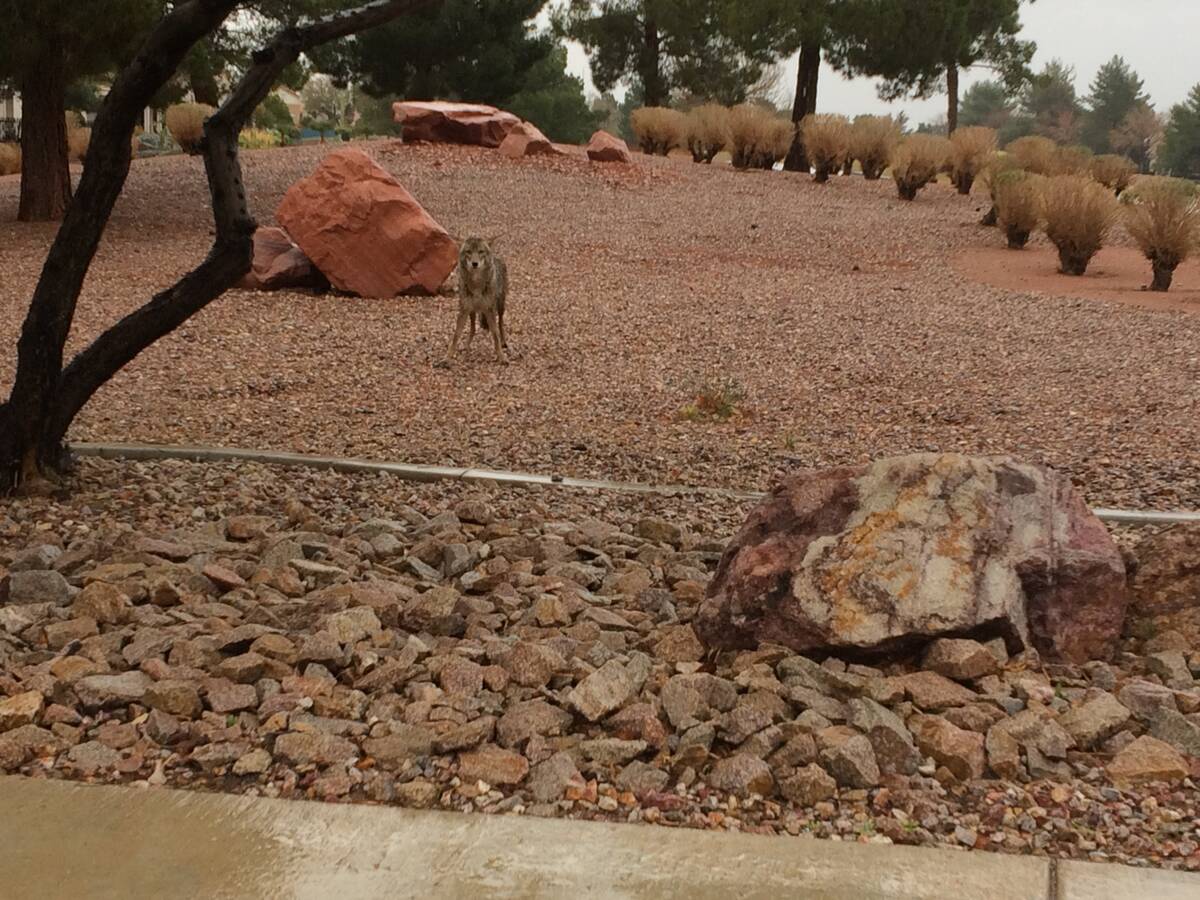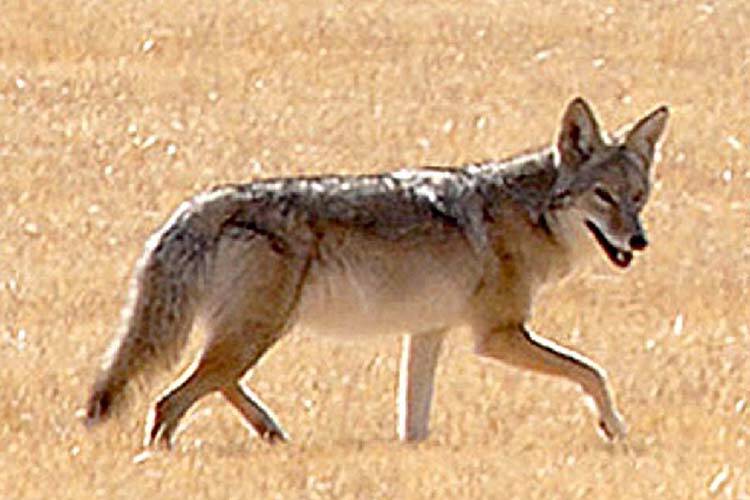Southern Nevada is coyote country. Here’s how to keep your pets safe
Southern Nevada sits in the center of coyote territory, and coyote sightings are often posted to social media.
So how can residents live peacefully among wildlife and protect their pets from coyotes?
Here are some tips from Douglas Nielsen, the Nevada Department of Wildlife’s conservation education supervisor, on what to do (and not do) to keep coyotes away.
“Coyotes, in most instances, really don’t want anything to do with us,” he said. “We just need to respect them.”
Avoid putting small pets in vulnerable positions, Nielsen said.
Many owners let their pets roam free in their neighborhoods, which is risky. Nevada law prohibits people from having their animals out in public, in most situations, without a leash, said Nielsen.
Leaving small pets outside overnight in the backyard is also risky, said Nielsen.
“If you live in an area where coyote activity is known to exist, and you open the door and put your cat outside, you’re really taking a risk. You’re making the choice to put your cat at risk,” Nielsen said.
Even though coyotes may not always view dogs as prey, interactions can still be just as dangerous.
“Coyotes, being a wild predator, have a territory, and anything, any other canine in there represents a threat to their territory. So, sometimes the interaction between a pet dog and a coyote is a defensive thing,” Nielsen explained.
Reducing food sources
The most effective way to prevent coyotes from entering into residential areas is to reduce things that attract them, said Nielsen.
Feeding wildlife, even if they aren’t coyotes, is a major reason why coyotes may be attracted to residential areas, Nielsen said.
“When people feed them, either on purpose, by accident or inadvertently, they become habituated to us, more comfortable around us,” Nielsen explained.
For example, feeding rabbits could lead to an unnatural increase in the rabbit population. More rabbits attract coyotes.
“That’s not safe for us and it’s not safe for them,” Nielsen said. “The first thing is, don’t feed them. The second thing is, haze the animals.”
Hazing, Nielsen explained, is any interaction that could make the coyotes know they are unwelcome.
Nielsen mentioned spraying them with a water hose or using noisemakers.
“That could be something as simple as just making a whole lot of noise, making yourself look as big as you can,” Nielsen said. “Yeah, chucking tennis balls at them, or rocks at them.”
In hazing, Nielsen warned against cornering wild animals. “You want to make sure they always have an avenue for escape,” he added.
Finally, Nielsen advised to keep vegetation maintained.
“We add so much vegetation, and the thing would be to make sure it’s trimmed up and cleaned up. Any clutter will attract rodents. The rodents will attract the things that eat the rodents,” Nielsen said.
“If you have fruit trees in your in your yard, and the fruit gets ripe and you don’t pick it or falls to the ground, they’ll eat that,” Nielsen added.
Coyote removal: effective or not?
Wildlife officials are hesitant to remove coyotes if they don’t pose an imminent danger.
When wildlife officials remove a coyote, they do not relocate the coyote to another area because coyotes patrol their own territories.
“We cannot move them place to another,” Nielsen explained. “You’d be setting up a dogfight between the coyote you’re moving with the one that lives wherever you let it go.”
Coyotes that are removed are euthanized and yet, even if one coyote is removed from an area, another coyote is likely to take its place, Nielsen noted.
“They play an important role in keeping the rodents down. So, if you don’t have the predatory species that feed on those small critters, like rats, mice, other rodents, then you’re going to have those rodents,” Nielsen explained.
“We have had neighborhoods in the past that have eliminated a coyote in their neighborhood. Then, the next thing they complained about was rabbits,” Nielsen added.
Animals, by their very nature, aren’t immediately dangerous or to be feared, Nielsen urged.
The Nevada Department of Wildlife hosts programming and courses on how to live with coyotes and other wildlife.
Contact Annie Vong at avong@reviewjournal.com. Follow @annievwrites on X.


















